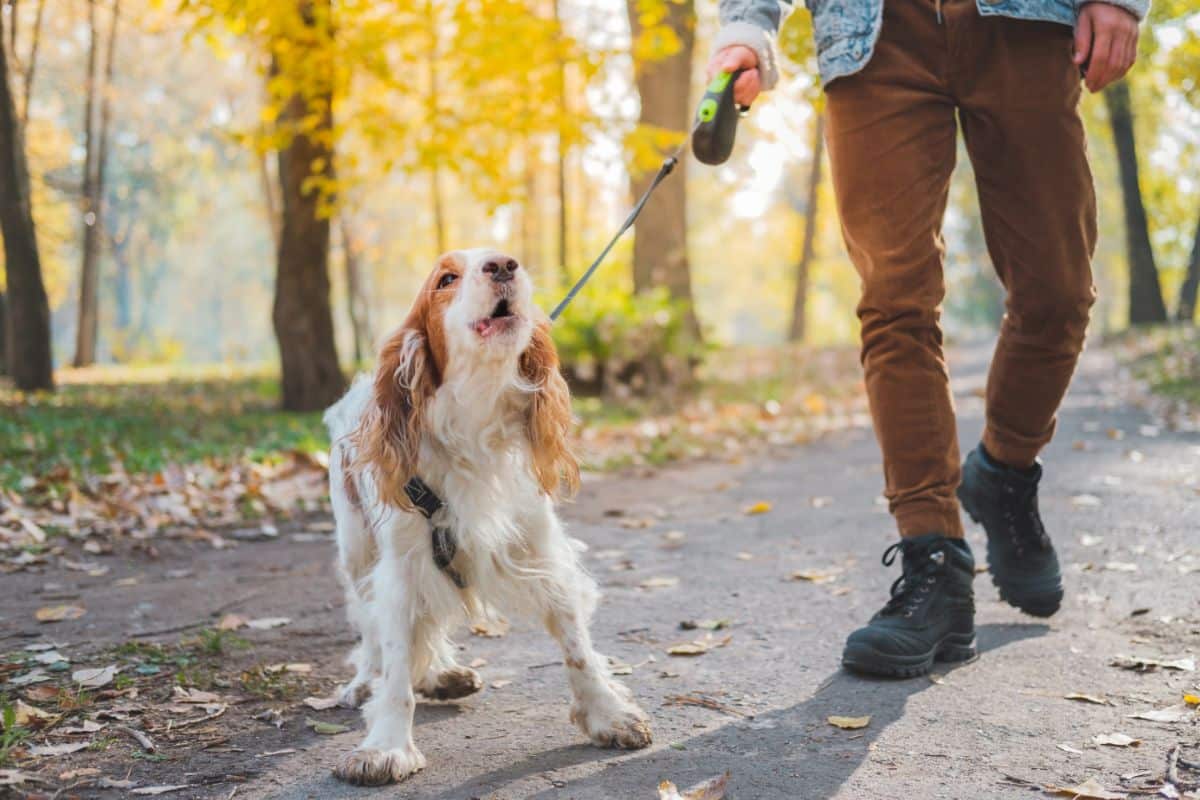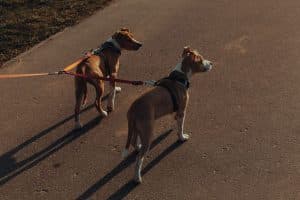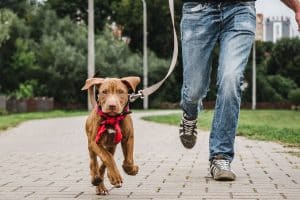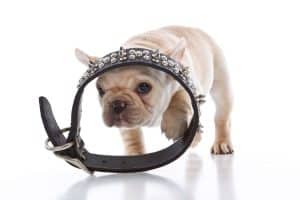It can be dangerous for you and your dog when your dog pulls on its leash, especially when it is bigger than you. If your dog has been pulling you off your feet, you might be struggling to find a way to prevent your dog from pulling.
That’s where we come in with our recommendation to use a double-ended leash to stop your dog from pulling.
In this article, we’ll explain what a double-ended leash is and how to use it to prevent your dog from pulling you around. We’ll help you find the right solution for your pet to ensure you both can enjoy your walks together safely.
What Is A Double-Ended Leash?
A double-ended leash is as it sounds. It is one leash with two clips on each end and a handle in the middle. It’s a leash that allows you to clip one end to your dog’s collar and the other to the front of your dog’s harness. Although you might think it’s odd, it’s a great way to manage your dog as it learns to walk on a leash properly.
Double-ended leashes should work by applying an even amount of pressure to your dog’s chest and collar. It makes it more comfortable for your dog and prevents too much pressure from being put in one spot.
Many people assume a clip harness will do the same, but some issues exist. Some dogs can pull so much that their harness will stretch around the side straps, which prevents it from working properly. Due to their design, a double-ended leash will prevent one part of your dog’s collar and harness from putting too much pressure on it.
Why Should You Use A Double-Ended Leash?
You should use a double-ended leash to prevent your dog from yanking on it and pulling you along. It’s the perfect tool to help control your dog while it’s still learning how to walk with you outside, and as your dog gets better, you can shift to a single-ended leash.
It’s better than using a single-ended leash and a harness as you don’t have to yank your dog back as it might injure them.
The reason it’s better is that you don’t have to pull your dog back, or else it might continue to go forward. You might pull your dog in another direction using a single-ended leash, but it won’t stop it from moving forward. Instead, it puts pressure on more of your dog’s body, which will prevent it from moving forward with less effort on your part.
How To Use Your Double-Ended Leash
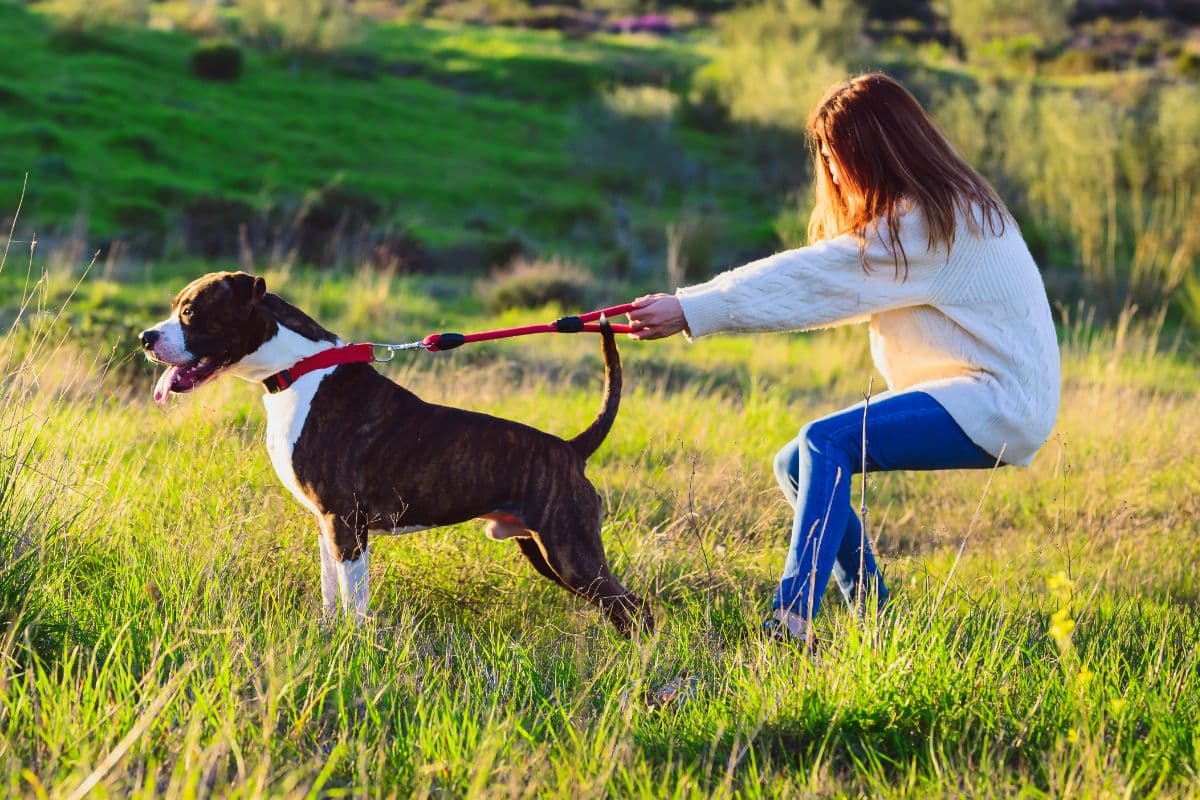
We’ve already mentioned how a double-ended leash works, but what is the best way to connect them to your dog? As it’s a versatile product, you’ll be pleased to know that you can connect it to the front of your dog’s harness and on the back of it.
These double-ended leashes are best for larger dogs, as they allow more control when walking them. It will also help your dog’s posture as you walk. You can also utilise your double-ended leash as a single-ended leash. All you need to do is insert one ring into the harness and loop the other around your lead so it can become a single lead.
We find that a double-ended leash is also safer for larger dogs when they’re wearing a headcollar. However, we would also use an additional fitted harness to ensure that your dog doesn’t hurt its neck.
How Do You Stop Your Dog From Pulling?
Dogs love going on walks, as it’s a new adventure for them outside the house. However, it can be difficult to teach them how to not pull you along. It’s safer for both you and your dog if you can prevent your dog from pulling.
They might pull to get you to go faster, and it might have worked in the past, but you shouldn’t encourage this behaviour. With the help of a double-ended leash, you can control some of this behaviour, but there are also some additional tips.
For example, while you’re walking your dog, you should reward your dog with a treat if they’re walking next to you. You can begin this training at home, as it will stop them from getting distracted by any distractions that they’re not used to.
While you’re walking with them, you should stop walking if the leash gets too tight. When the leash is loose, they should be rewarded with more steps, but if it gets tight, you should stop where you are.
You don’t need to tell your dog off or pull them back, either. Instead, you should wait for them to realise. If they don’t, you can always take a few steps in the other direction so they know to focus on you.
Final Thoughts
There’s nothing better than a peaceful walk with your dog, but it takes time to get to that relaxing pace. All dogs can get excited about their walks, and it takes time to train them. However, a single-ended leash can make it more difficult to control your dog on walks, especially if it’s bigger and stronger than you.
You also don’t want to hurt your dog accidentally, so you may find that a double-ended leash is a perfect solution to help you control your dog on a walk.
If you have any more questions about your dog and how to get them to stop pulling, feel free to check out our other articles for more information.
Frequently Asked Questions
Double-ended dog leads can help to influence your dog’s posture, which will help them to find the right balance. It also helps prevent them from pulling you along after them.
Double-ended dog leads will provide you extra control by connecting the lead to your dog’s harness and collar. It’s great for leash training or just handling larger breeds on a stroll.
